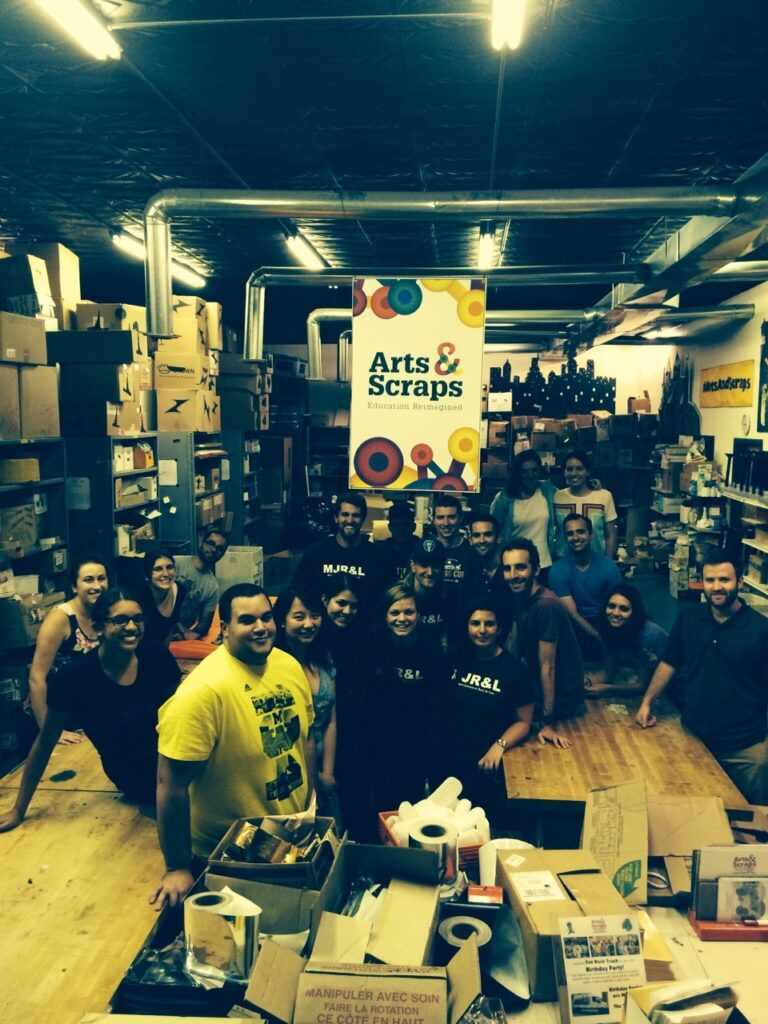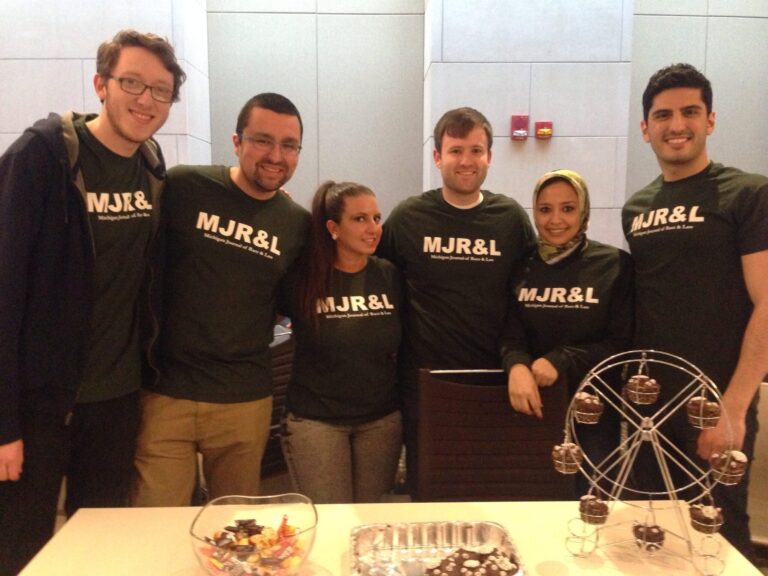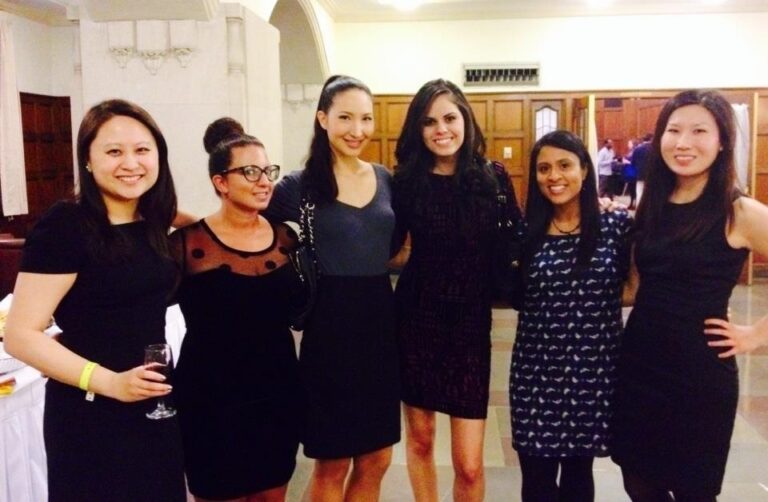All content categorized with: Uncategorized
Filter
Post List
Announcing the Vol. 21 Symposium: INNOCENT UNTIL PROVEN POOR
We are thrilled to announce a very special MJR&L Symposium, coming in 2016: Innocent Until Proven Poor: Fighting the Criminalization of Poverty. The Volume 21 Executive Editorial Board is hard at work behind the scenes to bring you a rich, timely symposium this February. Under the helm of Vol.
MJR&L Announces Volume 21 Editorial Board
The Michigan Journal of Race & Law is pleased to announce the Editorial Board for Volume 21: Editor-in-Chief Christianna Kyriacou Managing Editor Rebecca Salley Production Editor Lauren C. Tortorella Executive Articles Editor Peter Calloway Executive Notes Editor Stephanie Marshak Race & Curriculum Editor Britney…COMMENT: Sixty Years Too Late: The Judiciary’s Superficial Treatment of School Desegregation in Cowan
By Alanna Farber Associate Editor, Vol. 20 Executive Editor, Vol. 21 The school district in Cleveland, Mississippi has been subject to federal jurisdiction since 1965 due to continued struggles in desegregating its schools.[1] Fifty years ago, citizens of Cleveland sued the county’s board of education,…Habermas, the Public Sphere, and the Creation of a Racial Counterpublic
In The Structural Transformation of the Public Sphere, Jürgen Habermas documented the historical emergence and fall of what he called the bourgeois public sphere, which he defined as “[a] sphere of private people come together as a public . . . to engage [public authorities] in a debate over the general rules governing relations in the basically privatized but publicly relevant sphere of commodity exchange and social labor.” This was a space where individuals gathered to discuss with each other, and sometimes with public officials, matters of shared concern. The aim of these gatherings was not simply discourse; these gatherings allowed the bourgeoisie to use their reason to determine the boundaries of public and private and to self-consciously develop the public sphere. As Habermas writes, “[t]he medium of this political confrontation was . . . people’s public use of their reason.” The bourgeois public didn’t simply participate, but it did so both directly and critically. The development of the bourgeois public as a critical, intellectual public took place in coffeehouses, in salons, and table societies. In Great Britain, Germany, and France, particularly, the coffeehouses and the salons “were centers of criticism—literary at first, then also political—in which began to emerge, between aristocratic society and bourgeois intellectuals, a certain parity of the educated.” Intellectual equals came together and deliberated, an equality that was key in ensuring the requisite openness and deliberation. No one person dominated the discussion due to his status within the deliberative community. Instead, and above all else, the “power of the better argument” won out. Two conditions were critical to these deliberations. First, equality was key to the public sphere. Membership in the public sphere meant that no one person was above the other and all arguments were similarly treated and scrutinized. Second, the principle of universal access was crucial.8The doors of the deliberative space were open to all comers and no group or person was purposefully shut out. Seen together, these two conditions provide a blueprint for deliberative practices in a democratic society.“We need more hot lawyers, instead of cold ones.” Dr. Mary Frances Berry Delivers MJR&L @ 20 Keynote
On Friday, September 19th, the MJR&L 20th Anniversary Symposium hosted alumni, current students, and the public for engaging discussions on the evolution and future of race & law scholarship at the University and beyond. The keynote address was delivered by the esteemed Dr. Mary Frances Berry, and the Law School’s website…
MJR&L Associate Editors Take A Trip to Detroit’s Arts & Scraps
By: Daniela Tagtachian, Associate Editor Vol. 20 On August 27, 2014, the Associate Editors of the Michigan Journal of Race & Law drove out to Detroit to volunteer their time at Arts & Scraps, a nonprofit organization that serves the needs of youth in low-income areas…MJR&L at 20 Symposium Website Announcement!
The website for the MJR&L at 20 Symposium is now live! Check it out for information on speakers, the schedule, and other helpful links. Stay tuned for more on the symposium over the summer and into the fall. MJR&L at 20 Symposium Website…
MJR&L Announces Volume 20 Editorial Board
MJR&L Vol. 20 Executive Editorial Board members at the Journal Open House. From left: Andrew Goddeeris, Joseph M. Flynn, Maria Litsakis, Aaron W. Walker, Noha Moustafa, and George M. Barchini. The Michigan Journal of Race & Law is pleased to announce the Editorial Board for its historic…
MJR&L Editors attend APALSA’s 2014 Origins Banquet
MJR&L editors attended APALSA‘s 2014 Origins Banquet at the Michigan Union. APALSA’s Annual Origins Banquet is a celebration of Asian Pacific American diversity and culture. In addition to a keynote by a prominent APA speaker, dinner and dancing, Origins features the announcement of the recipients of the APALSA Public…Symposium Announcement & Call For Papers
Call for Papers “The Highest Tribute”: The Michigan Journal of Race & Law at Twenty September 19, 2014 University of Michigan Law School Ann Arbor, Michigan “In recognizing the humanity of our fellow beings, we pay ourselves the highest tribute.” Writing in 1972 in Furman…



